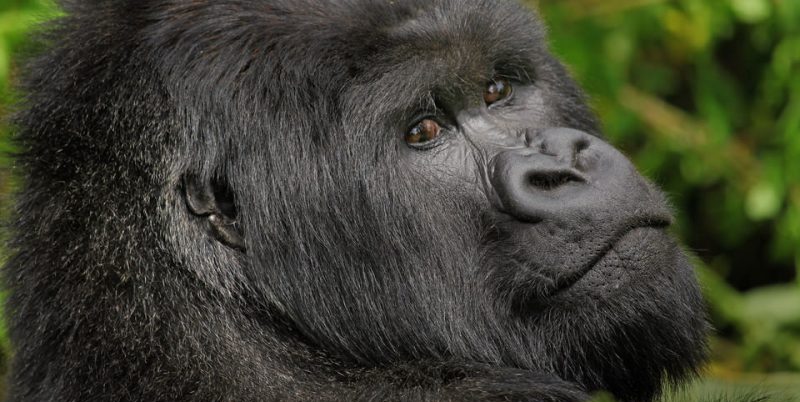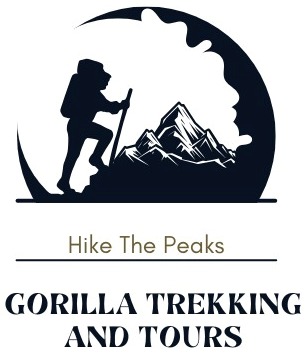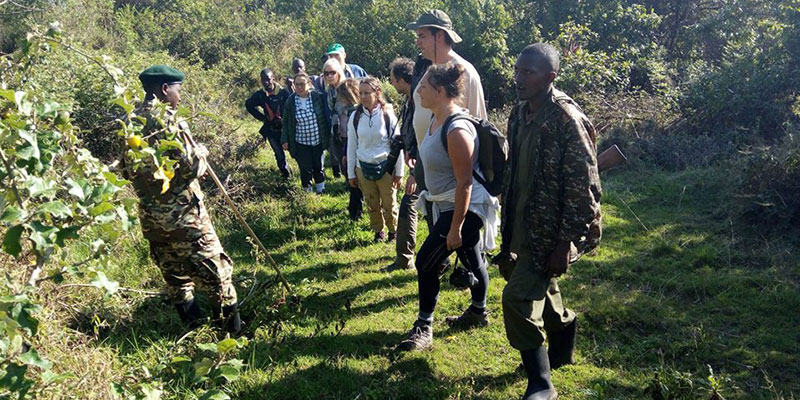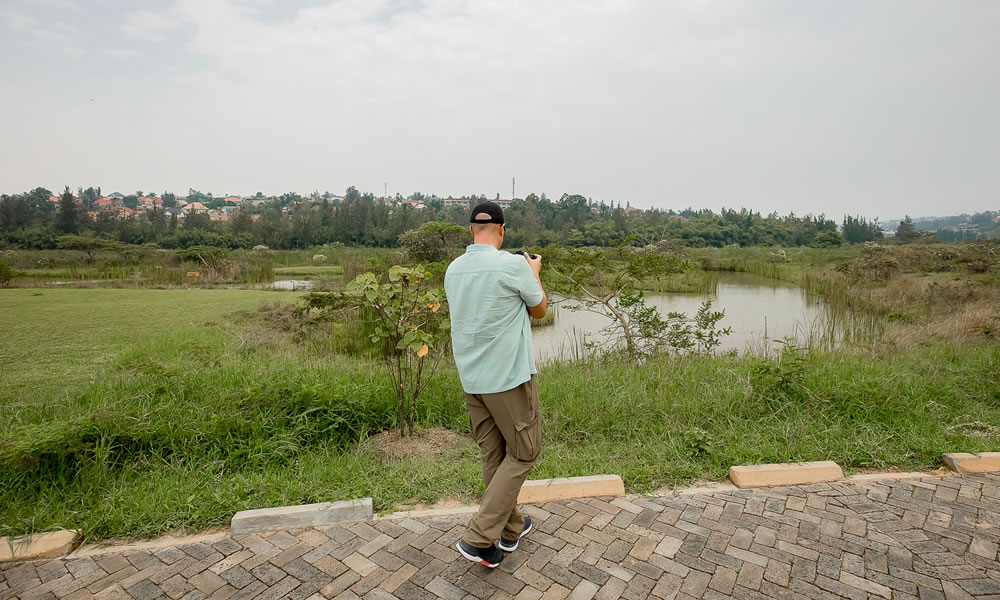10 Mountain Gorilla Families in Rwanda

Gorilla trekking Rwanda can be done from Volcanoes National Park. As of August 2016, there are 10 Mountain Gorilla Families in Rwanda for tourism. Like in Uganda, a maximum of 8 persons can visit each gorilla group per day spending a maximum one hour each visit. The 10 Mountain Gorilla Families in Rwanda available for tourism include Agasha (Also known as group 13), Amahoro, Bwengye, Hirwa, Karisimbi, Kwitonda, Sabinyo, Susa, Ugenda and Umubano.
The 2010 gorilla census across the Virunga Mastiff that was released in 2011 shows an increasing number of gorillas from 380 in 2003 to 480 in 2010. Although the official results of the 2015/2016 gorilla census are not yet out, it is estimated that the population of gorilla in Virunga Mastiff stands at 538 by 2015.
Out of the 480 gorillas in Virunga Mastiff, 268 (55.8%) are in Volcanoes National Park. The population of the wild unhabituated mountain gorillas in Rwanda is very small as 96.6% of the gorillas are habituated (Only 6 lone Silverbacks and one group comprising of 3 individuals are unhabituated). All these habituated Rwanda gorilla groups except the research groups are available for tourism and the small population of the wild.
Unhabituated Rwanda gorilla groups are not available for tourism as they are wild and flee or respond aggressively when approached. There are presently 10 habituated Rwanda gorilla groups / families in Volcanoes National Park translating available for tourism. Since a maximum of 8 tourists are allowed per group per day, a total of 80 permits are available per day.
This means that 80 visitors can track gorillas during gorilla trekking Rwanda. Surprisingly, each gorilla group has distinct and unique characteristic quite different from another.
As we earlier discussed, gorillas are naturally afraid of humans and will respond by fleeing or charging aggressively when approached in close contact by humans. The gorillas that are visited by people have undergone a process called “Habituation”. Habituation is a process whereby through daily peaceful contacts with humans, gorillas slowly loose the strong fear of humans and learn to be with humans as a neutral being in the environment. The table below describes the 10 habituated gorilla groups in Rwanda
Rwanda gorilla groups composition (For Tourism)
| No. | Group name | Rwanda Group name meaning/Group highlights | Numbers |
| 1 | Agasha (aka Group 13) | First habituated when they were 13 individuals, hence the name group 13. They increased in number and group leadership was overtaken from Silverback Nyakarima by a Silverback Agasha (meaning the news” hence the current name | 25 |
| 2 | Amahoro | Amahoro means “Peaceful”. This is the most peaceful group in Volcanoes National Park. The group has lost several individuals to Ububano group. | 17 |
| 3 | Bwengye | A group named from the lead Silverback called Bwengye. Bwenge is a Kinyarwanda word which means ‘Wisdom’. It is apparently the group that was featured in the movie “Gorillas in the Mist”. The group is mostly on the slopes of Karisoke Volcano between Karisimbi and Bisoke mountains. The group witnessed dark times when its 6 infants died. | 11 |
| 4 | Hirwa | Hirwa means “lucky one”. The group was seen in 2006 when trackers witnessed its formation by the merging of some members from Group 13 (Agashya) and Sabyinyo. They were lucky other gorillas joined the group. | 9 |
| 5 | Karinsimbi | The family split from the Original Susa group, hence sometimes called Susa-B. The group is always on the slopes of Karisimbi Volcano, hence the group name. It is the most difficult group to track because of the location. Tracking the family may sometimes be prohibited because of its distant location. | 15 |
| 6 | Kwitonda | The name of the group is derived from the lead Silverback known as Kwitonda which means “humble one”. The group migrated from DRC and tend to range very far, making it a moderately difficult group to track. The group wonders in the lower slopes of Mt. Muhavura | 18 |
| 7 | Sabinyo | The group is named after the Sabyinyo volcano which means “old man’s teeth”. One group closest to the park’s edge therefore easier to track. They range in the gentle slopes between Mt. Sabyinyo and Mt. Gahinga. The group has the largest Silverback in Volcanoes NP known as Guhonda | 8 |
| 8 | Susa | The group name is from Susa river that flows in their home range. The group famously studied by Dian Fossey. One of the hardest groups to track. Formally were 42 but there was a split. Well known for playful twins called Byishimo & Impano. Also known for one of the oldest gorilla called poppy, thought to be born in 1976. | 28 |
| 9 | Ugenda | Ugenda means “being on the move”. It was named Ugenda because it was always moving from one place to another. Because of the moving nature, tracking difficulty varies considerably. The Group is found in the Karisimbi area of Rwanda. | 11 |
| 10 | Umubano | Umubano means “neighborliness”. They were originally Amahoro members, but broke off after the dominant Silverback (Ubumwe) was challenged by Charles, now the leader of Umubano. | 11 |
Expect the above during gorilla trekking Rwanda. For questions, you can always contact us!!



